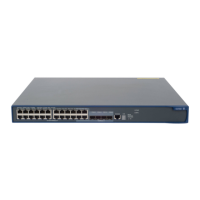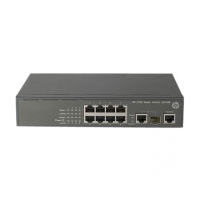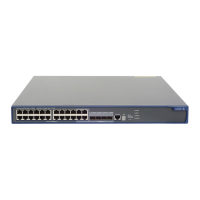223
Ste
Command
Remarks
4. Configure BGP to remove
private AS numbers from the
AS_PATH attribute of updates
sent to an EBGP peer or peer
group.
peer { group-name |
ipv6-address } public-as-only
By default, this feature is not
configured.
This command is only applicable to
EBGP peers or peer groups.
Ignoring the first AS number of EBGP route updates
By default, BGP checks whether the first AS number in the AS_PATH attribute of a route update received
from a peer is the AS number of that peer. If not, BGP discards the route update.
To ignore the first AS number of EBGP route updates:
Step Command Remarks
1. Enter system view.
system-view N/A
2. Enter BGP view.
bgp as-number N/A
3. Configure BGP to ignore the first AS
number of EBGP route updates.
ignore-first-as
By default, BGP checks the
first AS number of EBGP
route updates.
Tuning and optimizing BGP networks
This section describes how to tune and optimize BGP networks.
Configuring the keepalive interval and hold time
BGP sends keepalive messages at a specific interval to keep the BGP session between two routers.
If a router receives no keepalive or update message from a peer within the hold time, it tears down the
session.
You can configure the keepalive interval and hold time globally or for a specific peer or peer group. The
individual settings take precedence over the global settings.
The actual keepalive interval and hold time are determined as follows:
• If the hold time settings on the local and peer routers are different, the smaller setting is used. If the
hold time is 0, BGP does not send keepalive messages to its peers and never tears down the
session.
• If the keepalive interval is 0 and the negotiated hold time is not 0, the actual keepalive interval
equals 1/3 of the hold time. If the keepalive interval is not 0, the actual keepalive interval is the
smaller one between 1/3 of the hold time and the keepalive interval.
To configure the keepalive interval and hold time (IPv4):
Ste
Command
Remarks
1. Enter system view.
system-view N/A

